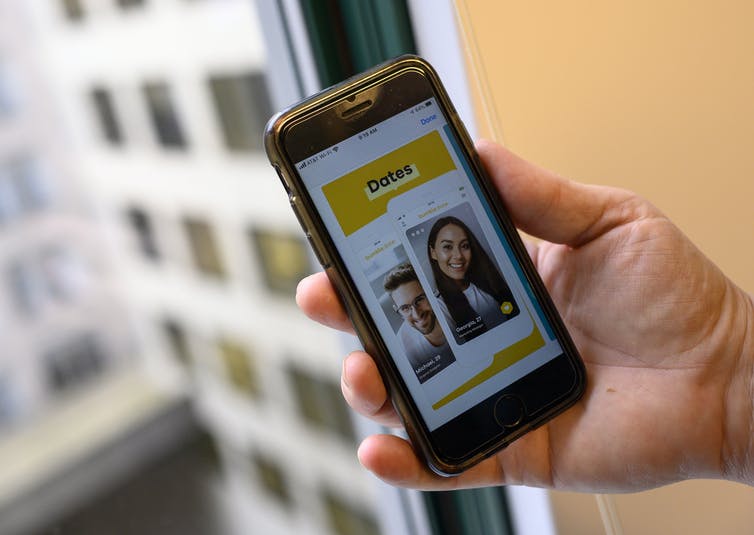Bumble raised $2.15 billion in an initial public offering, or IPO, late on Feb. 10, just in time for Valentine’s Day. Investors swooned over the women-go-first dating app, buying more shares and at a higher price than initially expected, valuing the company at $8.3 billion.
But what exactly is an IPO?
As a finance professor, I believe understanding IPOs are an important part of knowing how markets work. More interesting to me, however, is how a new type of IPO is growing in popularity — including among the Redditors who are upending financial markets — and allowing more investors than ever to buy into the “hype” when a company goes public.
Why companies go public
Companies use IPOs — known as “going public” — to access the deep pockets of the U.S. stock market. At the end of 2020, the IPO market was valued at over $50 trillion.
To understand what an IPO is, think about starting a private business. You might deposit $50,000 into a bank account, purchase equipment and start operations. However, eventually, you will run out of money if you need to expand — especially if you are growing quickly.
To make life a little easier, you may attempt to obtain money from your friends or family or secure a loan from a bank. Similarly, public companies can access the stock market to raise money from investors in exchange for the promise of future profits and returns.
But in order to do that, first the company must go public.
When a business decides to go through with an IPO, it first goes to an investment banker — the same way you might go to a real estate broker when you decide to sell your house. The banker does all the same things that a broker might do, such as appraising the business by determining its value and risk and trying to match the company that is going public with well-heeled buyers who might be interested in buying a share of it.
In some cases, the banker might act more like a used car dealer, in which case the investment bank buys the company’s shares for a set price and then sells them to other investors later on at — it hopes — a profit.
In any case, the company going public doesn’t sell its new shares to “regular investors.” Instead the banks handling the deal turn to their favored wealthy clients, who initially buy shares and then sell them on to the public when the stock begins trading — usually at much higher prices than they paid. Legal restrictions mean the average individual cannot buy shares directly from an investment bank. So you typically need to be an accredited investor to be qualified, and trading app Robinhood’s army of day traders likely wouldn’t be eligible.
Success for an IPO typically means two things: The company gets as much as or more money than it aimed for, and the price “pops” on the first day of trading.
In Bumble’s case, it initially offered 34.5 million shares at a price of $28 to $30, but overwhelming demand meant it was able to sell 50 million at $43. That allowed it to raise well more than double the capital it had earlier planned on.
As far as whether early investors will get a first-day boost, BMBL surged to $70.31 on Feb. 11 in its first day of trading on the Nasdaq stock exchange, creating a hefty profit for investors who bought into the IPO and sold their shares.
Rise of the SPAC
However, there’s a new IPO method in town that is becoming an increasingly common way for companies to go public: the SPAC IPO.
SPAC stands for special purpose acquisition company, and they have suddenly become the next big thing among Redditors on WallStreetBets who fueled the skyrocketing prices of GameStop, AMC, silver and other securities in recent weeks. The zero-commission trading app Robinhood, which had been the Redditors’ favored place to buy stocks, is even considering doing a SPAC rather than a normal IPO as it seeks to go public.
The difference is that a SPAC is like an IPO in reverse. An investor-led fund does an actual IPO — raising money from other elite Wall Street types — but with a shell of a company that has no operations. Known as a “blank check” business, its entire purpose is to eventually purchase an unspecified private company, thus making it public as well, and typically has two years to do it.
In 2020, there were about the same number of traditional IPOs as SPACs for the first time since the first SPAC was created in 2003.
The upshot is that essentially anyone can invest in a SPAC and acquire a piece of the once-private company. Of course, this is also a very speculative investment, and it’s easy to lose everything. But that can be true of any IPO, which have historically underperformed the market.
In other words, as always, buyer beware.
Before you go...
Please consider supporting Technical.ly to keep our independent journalism strong. Unlike most business-focused media outlets, we don’t have a paywall. Instead, we count on your personal and organizational support.
3 ways to support our work:- Contribute to the Journalism Fund. Charitable giving ensures our information remains free and accessible for residents to discover workforce programs and entrepreneurship pathways. This includes philanthropic grants and individual tax-deductible donations from readers like you.
- Use our Preferred Partners. Our directory of vetted providers offers high-quality recommendations for services our readers need, and each referral supports our journalism.
- Use our services. If you need entrepreneurs and tech leaders to buy your services, are seeking technologists to hire or want more professionals to know about your ecosystem, Technical.ly has the biggest and most engaged audience in the mid-Atlantic. We help companies tell their stories and answer big questions to meet and serve our community.
Join our growing Slack community
Join 5,000 tech professionals and entrepreneurs in our community Slack today!

The person charged in the UnitedHealthcare CEO shooting had a ton of tech connections

Delaware students take a field trip to China using their tablets and ChatGPT

From rejection to innovation: How I built a tool to beat AI hiring algorithms at their own game



